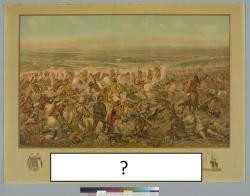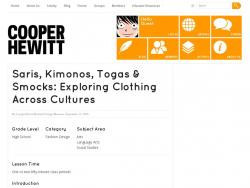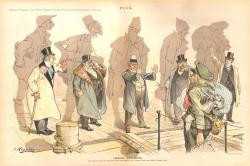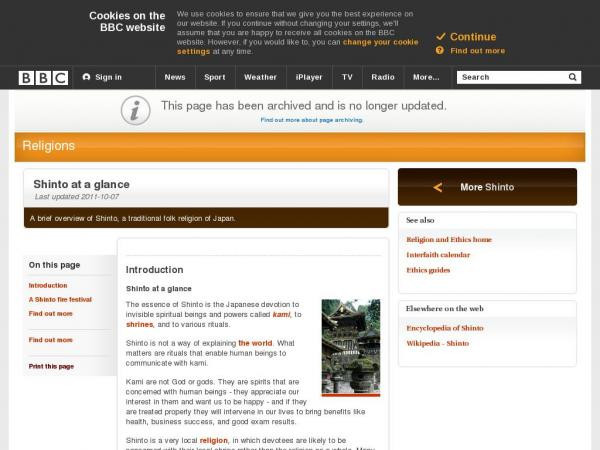Kate Harris
Social Studies teacher
Pittsburgh CAPA
Middle School (13 to 15 years old), High School (16 to 18 years old)
Teacher/Educator
Language Arts And English, Civics, Literature, Cultures, Economics, Social Studies, Geography, Writing, US History, Arts, Other
I'm a history-lover, art fan, and bookworm. I taught high school history (U.S. History and World Religions) for ten years in North Carolina, teach currently in Pittsburgh, PA, and am working to help teachers make the most of this new resource!
Kate Harris's collections
How a Bill becomes a Law
<p>How can ideas become legislation? This student activity reviews the process of how a bill becomes a law. Students may choose from two videos to watch, and then can read through the collection and investigate the resources. They may want to take notes on the process. Finally, a sorting activity assesses whether or not students truly understand the process of creating new legislation in the United States.</p>
 Kate Harris
Kate Harris
12
What's in a name?
<p>This collection is based on a lesson in Bruce Lesh's "Why Won't You Just Tell Us the Answer?" and on a Smithsonian National Museum of American History lesson (both cited fully below). In this lesson, students will evaluate primary source material in order to develop an appropriate name for the site of the 1876 battle at Little Bighorn River. This collection allows students to explore the following questions:</p><ul><li>Why do different interpretations of history develop? How do they change over time?</li><li>When thinking about conflicts in history, whose perspectives are valued and remembered?</li></ul><p>tags: Custer, Sitting Bull, Crazy Horse, Little Big Horn, continuity, change over time, perspective, historiography, point of view, Native American, indigenous, American Indian, Sioux, Greasy Grass</p>
 Kate Harris
Kate Harris
18
Running Fence
This teaching collection includes images and video of Running Fence, a work of installation art by Christo and Jean Claude. Included at the end is a lesson plan that engages students in analysis of Running Fence and details the steps for a student-designed installation art work at their school.
Learning goals include:
• Define installation art
• Analyze the process and results of the work of Jean-Claude and Christo to develop Running Fence
• Use the design process to develop a proposal for an installation art piece
• Use persuasive speaking skills to pitch your plan to the relevant stakeholders in your school community
• Plan and execute a piece of installation art on your school grounds, working cooperatively with a team
 Kate Harris
Kate Harris
46
Immigration to America
This collection provides an overview of immigration to the United States, but emphasizes the increased immigration during the Gilded Age. Students can complete the collection independently, keeping in mind the following guided questions:
-Why have people been motivated to immigrate to the United States?
-What challenges have immigrants faced while traveling to or after arriving in the United States?
-What contributions have immigrants made to American society?
 Kate Harris
Kate Harris
20
The 1850s and Causes of the Civil War
This collection includes artifacts, stamps, political cartoons, portraits, and videos representing various long-term and short-term causes of the Civil War. Students could use the collection as the basis for a sorting activity:
Which causes are long-term and which are short?
Which represent economic, social, or political differences between the North and South?
Can they be put in chronological order?
Which show attempts at compromise and which show that violence was difficult to avoid?
Additional teaching ideas are listed in the Notes to Other Users section.
 Kate Harris
Kate Harris
33
Bushido, Bun, and Bu: Life as a Samurai
This collection includes resources reflecting the ideal characteristics of a Japanese samurai. After reviewing the resources in this collection, students will be able to:
-analyze the changing role of the samurai in Japanese society
-define and give examples of bushido, bun, and bu
-compare the expectations for samurai with those of other social groups
Students will begin by visiting two websites in order to gain background information on samurai. They will then read an excerpt from The Way of the Samurai and answer questions. Next, they will review a series of resources and determine whether they represent bushido, bun, or bu. Finally, students will begin a comparative research assignment.
 Kate Harris
Kate Harris
16
Evaluating America's First System of Government
<p>What kind of government best suited the needs of the rebelling colonists? In this learner resource, students will learn about the Articles of Confederation and determine if they should be remembered positively or negatively. What were the strengths of the Articles? What were the weaknesses that led to the Constitutional Convention, and the writing of a new form of government, our current Constitution?</p><p>tags: articles of confederation, whiskey rebellion, northwest ordinance, declaration of independence</p>
 Kate Harris
Kate Harris
8
Exploring American Ideals in Art
<p>How can American ideals be defined and expressed in different ways? The United States of America is associated the ideals of Democracy, Rights, Liberty, Opportunity, and Equality. Those values have served as sources of inspiration for artists as goals that the nation aspires to (even if they are not always achieved). This collection contains artworks inspired by one or more of the ideals listed above. Students should choose a work and identify which ideal it relates to: Democracy, Rights, Liberty, Opportunity, and Equality. </p><p>In a short essay based on the artwork, students should answer the following questions:</p><p>-How would the student define Democracy, Rights, Liberty, Opportunity, or Equality?</p><p>-What is the artist trying to communicate about how this idea plays out in America?</p><p>-Does the student agree or disagree with the artist's interpretation?</p><p>If desired, students could create their own artwork based on one of the American ideals.</p>
 Kate Harris
Kate Harris
21
Timeline: Causes of the Civil War
<p>This collection includes artifacts, stamps, political cartoons, portraits, and videos representing various long-term and short-term causes of the Civil War. After reviewing the collection, students will sort resources into chronological order, focusing on continuity and change over time. </p><p>Tags: compromise, Civil War, John Brown, Fort Sumter, Ft, Abraham Lincoln, Sumner, Brooks, Taney, Dred Scott, 1850, 1860, secession</p><p><br /></p><p>Additional teaching ideas are listed in the Notes to Other Users section.</p>
 Kate Harris
Kate Harris
30
Geometry and Islamic Art
<p>This is a collection of artifacts representing geometric motifs in Islamic art. Students will learn why these complex patterns are so prevalent in Islamic art, practice spotting different types of patterns, and begin to create their own, using just a ruler and a compass. They will also have an opportunity to explore the concept of tessellation using an interactive tool.</p><p>tags: geometry, circle, angle, star, mosque, mihrab, tile, Muslim, Islam, religion</p>
 Kate Harris
Kate Harris
16
How Radio Changed America
The technology for radio communications advanced during World War I, but it wasn't until the 1920s that commercial broadcasting grew and everyone wanted a radio for their home. Radio had a huge impact on creating a "mass media" that bound together the nation. As students explore this collection, they will look for evidence proving that radio changed America in four different areas:
-Politics
-Entertainment and Sports
-Religion
-Advertising
Possible assignments using this collection include:
1) Writing an essay evaluating the statement "Radio created a mass culture in America."
2) Researching a particular figure in radio's early history and sharing findings with classmates.
3) Creating a 1920s radio program that featured key people and trends from the decade. This could be recorded and shared in the form of a podcast.
4) Developing a chart comparing and contrasting the impact of radio with television or the internet.
 Kate Harris
Kate Harris
25
How Siddhartha Became the Buddha
<p>This collection teaches students about the biography of Siddhartha Guatama and asks them to analyze images depicting stages of his life. Students will also learn about the different mudras, or hand gestures, that the Buddha makes. Quiz questions and hot spots are embedded throughout to check for understanding and support learning. </p><p>Tags: Siddhartha, Buddha, Buddhism, reincarnation, religion, India</p>
 Kate Harris
Kate Harris
12











